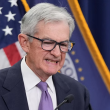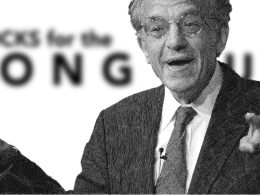by Jeff Weniger, CFA Head of Equity Strategy, Kevin Flanagan Head of Fixed Income Strategy, WisdomTree
About a month ago, we wrote about the prospects of quantitative tightening (QT) coming to an end in the not-too-distant future. Not that we proclaim to be Nostradamus or anything, but the Fed actually took the cue and announced that the current QT policy will be ending come December 1st. Looking back, this end-date came a bit sooner than the market was expecting and it has given rise to more attention being placed on the funding markets.
It is important to remember the funding markets are really where it all begins. This is the arena financial institutions and corporations turn to in order to meet their funding needs on a short-term basis. The financial crisis and Covid underscored, as well as highlighted, the importance of this fact because, if you can’t fund yourself on a short-term basis then additional problems begin to escalate.
Typically, the type of funding this entails is of either the overnight variety, or very short-term in nature. Fed funds, the secured overnight financing rate (SOFR) and the government repo market in general are prime examples. These tend to be more overnight in nature but can also consist of a couple days or even 1-week term structures. For those keeping track, SOFR is what replaced LIBOR in the financing market and is a “broad measure of the cost of borrowing cash overnight collateralized by Treasury securities”, according to the New York Fed.
SOFR and the repo market are tied to the current fed funds trading range. If these rates are measurably higher than fed funds, reserves are viewed as being scarce, while the opposite, ample reserves, creates a setting where the aforementioned rates are below fed funds.
In theory, QT can act as an ‘absorber’ of reserves as the Fed is taking money out of the system by letting Treasury or MBS securities roll off their balance sheet. As a result, SOFR/repo rates can increase as financial institutions continue to have demand for funds, but there is less supply in the system. The Fed can help to offset this situation by providing either temporary or permanent open-market operations. The temporary approach involves providing reserves through repurchase agreements collateralized by eligible securities such as Treasuries with the primary dealer community (the financial institutions that are chosen to exclusively transact with the Fed). Permanent operations were once known as either a ‘bill’ or ‘coupon pass’ but graduated into quantitative easing (QE) for the most part, which entails the Fed actually buying Treasuries/MBS.
There is a sense that the latest version of QT is coming to a sooner than expected end because reserves were becoming less plentiful. In other words, by stopping balance sheet run-off, the Fed is no longer ‘absorbing’ money from the banking system.
So, what if reserves are becoming more scarce and the SOFR/repo rates are being adversely impacted? The Fed has tools at their disposal to help out and have used them before. Obviously, the work-horse for the Fed will be to use the temporary open-market operations we just discussed. They also have a ‘standing facility’ on this front, not to mention the discount window.
However, what if these tools are not solving the issue? The Fed can turn QE back on like they did in the latter part of 2019, most likely by buying T-bills. It is important to note that this would be purely a technical mechanism for the funding markets and not a dual mandate monetary policy consideration. Powell & Co. have not really mentioned any concerns on reserve availability up to now, but nevertheless, you know how stories can spread in this age of social media.
Copyright © WisdomTree















